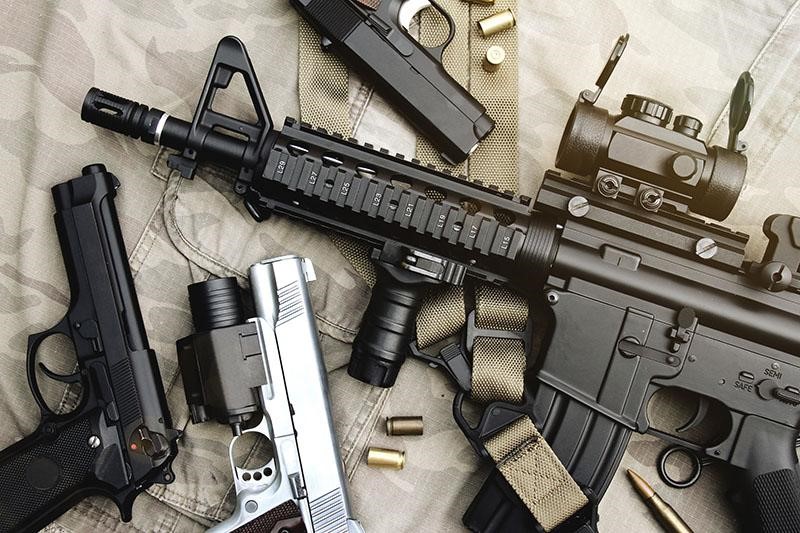The gun ownership scene includes a mix of beliefs, practices, and responsibilities. As firearms have become a common topic of national discussion, the conversation naturally shifts to the importance of safety and proper handling. Owning a gun involves more than knowing how to shoot; it’s about adopting responsible habits that keep both the owner and others safe.
Understanding the need for effective safety measures encourages a deeper look at strategies for responsible ownership. From secure storage solutions, such as exploring gun safes for sale, to ongoing training, building awareness and staying prepared can lower risks and create a culture where safety comes first.
Investing in a Reliable Gun Safe
Storing firearms securely is essential for keeping your home safe and preventing unauthorized access. Reliable gun safes should be made of fireproof materials and equipped with tamper-resistant locks, providing a strong barrier against theft and accidents. When choosing one, consider its size—it should accommodate your current firearms and allow room for future additions.
Following storage laws and best practices isn’t just the right thing to do—it’s necessary to reduce the risk of accidents or theft. Regularly checking your safe’s condition and upgrading its features when needed keeps it effective. Taking these steps strengthens your overall firearm safety.
Practicing Safe Gun Handling
Learning proper firearm handling is the foundation of accident prevention. Keeping your finger off the trigger until you’re ready to shoot and always pointing the muzzle in a safe direction are habits every gun owner should develop. Practicing these techniques regularly makes them second nature. This is especially important because complacency can lead to mistakes, particularly in stressful situations.
Including family members in safety training fosters shared responsibility. For example, teaching children to recognize and respect firearms can build awareness and reduce curiosity-driven risks. Holding hands-on demonstrations, such as showing how to check if a firearm is unloaded, enhances understanding. Setting aside time for regular safety talks, like creating a monthly family safety check-in, encourages open conversations and helps build a respectful, mindful approach to firearms in everyday life.
Staying Updated on Gun Laws
Gun laws differ widely depending on your state and local area. What’s legal in one place might be illegal somewhere else. Staying informed isn’t just about following the rules—it’s part of being a responsible gun owner. Knowing about updates on storage rules, transportation methods, and usage guidelines can help you avoid legal trouble and promote safety in your community.
There are plenty of resources to help you stay informed. Check official state websites and law enforcement bulletins for updates. Joining local gun clubs or forums can also keep you in the loop about changes in regulations.
Making Training a Priority
Regular training sharpens your firearm skills and reinforces safety. Taking a basic ownership course is a great starting point, but it’s just the beginning. Advanced training in tactical techniques and situational awareness builds your confidence and ability to respond effectively in different situations. Learning from certified instructors provides hands-on experience that connects theory to real-life scenarios.
Practicing at shooting ranges or with simulated exercises helps maintain your skills. Setting aside time each month for training keeps your skills sharp and reinforces safety habits. Adding dry-fire practice to your routine can improve your handling skills and muscle memory without needing live ammunition.
Keeping a Family-Safe Environment
Owning guns while keeping your home safe for children requires more than just secure storage. Adding locks, alarm systems, and surveillance can prevent unauthorized access. Biometric locks, for instance, let adults access firearms quickly while keeping them out of children’s hands. Taking these steps creates a safer environment for everyone.
Talking openly about firearm safety can help break down any stigmas. Teaching children about proper handling helps them understand that guns are tools requiring respect and caution. Separating guns from ammunition with clear physical barriers reinforces safety as the top priority. Regular family discussions can integrate safety into daily life, encouraging shared responsibility for keeping everyone secure.
Responsible gun ownership involves building habits that focus on safety, awareness, and accountability. A reliable gun safe is essential to prevent unauthorized access and keep your home secure. Regular training sharpens handling skills and helps make safe practices second nature. Including your family in safety discussions and training fosters shared responsibility and respect for firearms. Staying informed about local gun laws keeps you aware of legal requirements and promotes safer practices. Focusing on secure storage, consistent education, and open communication creates a safer environment for everyone and sets a positive example of what responsible gun ownership looks like in action.














